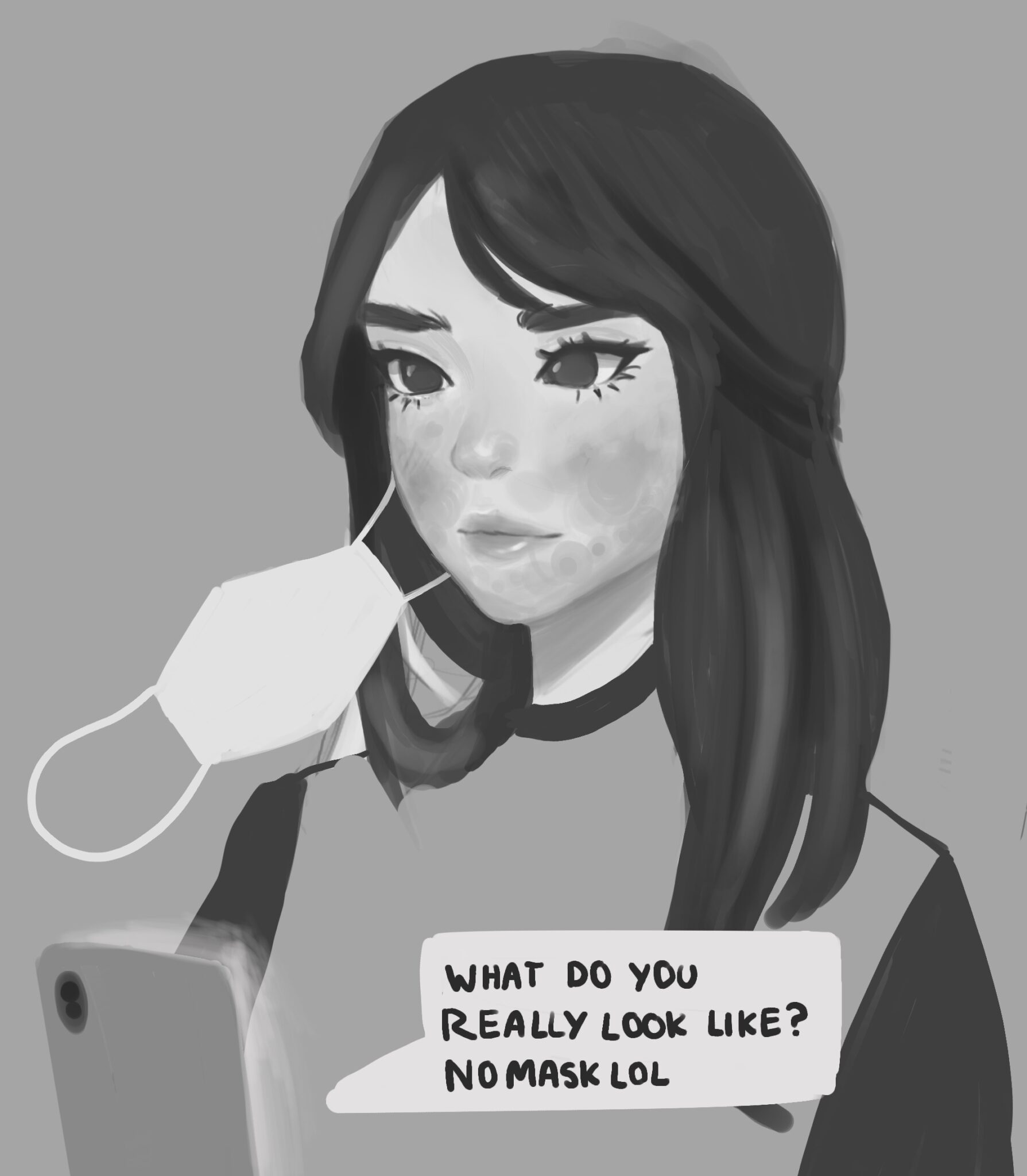

Struggles with self image are no rarity within high school environments. Recently, coming out of the pandemic, many students have opened up about experiencing lower self-esteem due to the pressures of beauty standards, as well as the negative emotional impacts of masks.
At the beginning of the 2021-22 school year, many Aragon students felt apprehensive about returning to campus after being isolated for more than a year. The safety of hiding behind a blank screen on a Zoom call was gone, and students were now faced with the challenge of being thrust back into an interactive school setting where their physical appearances were completely exposed.
“It was a little nerve-wracking for me,” said sophomore Alessandra Hernandez. “For one thing, I was a freshman, so I didn’t know anybody. Also … I wasn’t used to people seeing me, even with my mask on.”
The fear of others’ judgment has even prevented some students from returning to on-campus learning entirely.
“One of my classmates at my old school did not go back [to] in-person [learning] even though it was an option … because they were self-conscious. … Nobody should feel like they have to hide themselves,” Hernandez said.
“Nobody should feel like they have to hide themselves”
Due to the isolation and boredom of the pandemic, many teenagers resorted to excessively using social media applications such as TikTok and Instagram. The beauty standards presented on these platforms made the transition to on-campus learning significantly more difficult.
“You see so many faces online, some of which don’t look like [you],” said junior Annie Saban. “It can kind of make you feel like, ‘Oh, I’m not pretty enough.’”
Saban is not the only student who struggles with self image. While social media plays a massive role in teenagers’ online lives, many have found themselves comparing themselves to others on these platforms, worsening pre-existing insecurities. Not only that, but on many social media applications, photos can be warped and manipulated with Photoshop and heavy editing, creating false perceptions of what people look like.
“On social media … you’re always comparing yourself to so many different people … [and] you don’t know what’s real and what’s fake,” Hernandez said.
However, this year, COVID-19 mask requirements have changed. While students and staff are still encouraged to wear masks indoors, they are not required to do so. Many students, not used to their peers seeing them unmasked, have found the sudden change to be jarring.
“I think it’s made a lot of people more self-conscious,” said senior Zachary Zane. “They’d been given a shield to their own faces and … identities, and sometimes it’s more comfortable hiding … than revealing yourself.”
This year’s change in school mask policies has resulted in a new social phenomenon, commonly known as “mask-fishing.” A play on the term ‘cat-fishing,’ mask-fishing is when a person is deemed to be more physically attractive when they are wearing a mask than when they take it off.
“They’d been given a shield to their own faces and … identities, and sometimes it’s more comfortable hiding … than revealing yourself”
“My brain auto generates what I think should be under [peoples’] masks,” Zane said. “I feel like there’s pressure to try and fill in that gap.”
Although the pressures of self image and beauty standards can be daunting, students are still finding ways to combat them. For Saban, that means recognizing that beauty exists in all different forms.
“I saw a quote online that really emphasizes how you shouldn’t compare yourself to others,” Saban said. “‘Flowers and Christmas lights don’t look anything like each other, but they’re both beautiful.’ I keep that in mind when [I’m] on [social media].”
Most of all, finding joy through inner beauty has also been a source of comfort for many students. Hernandez finds that embracing herself for who she is has been the best way to fight her insecurities.
“Don’t be afraid of who you are,” said Hernandez. “Focus on who you are as a person, and I think that will shine over any insecurity that you might have.”



